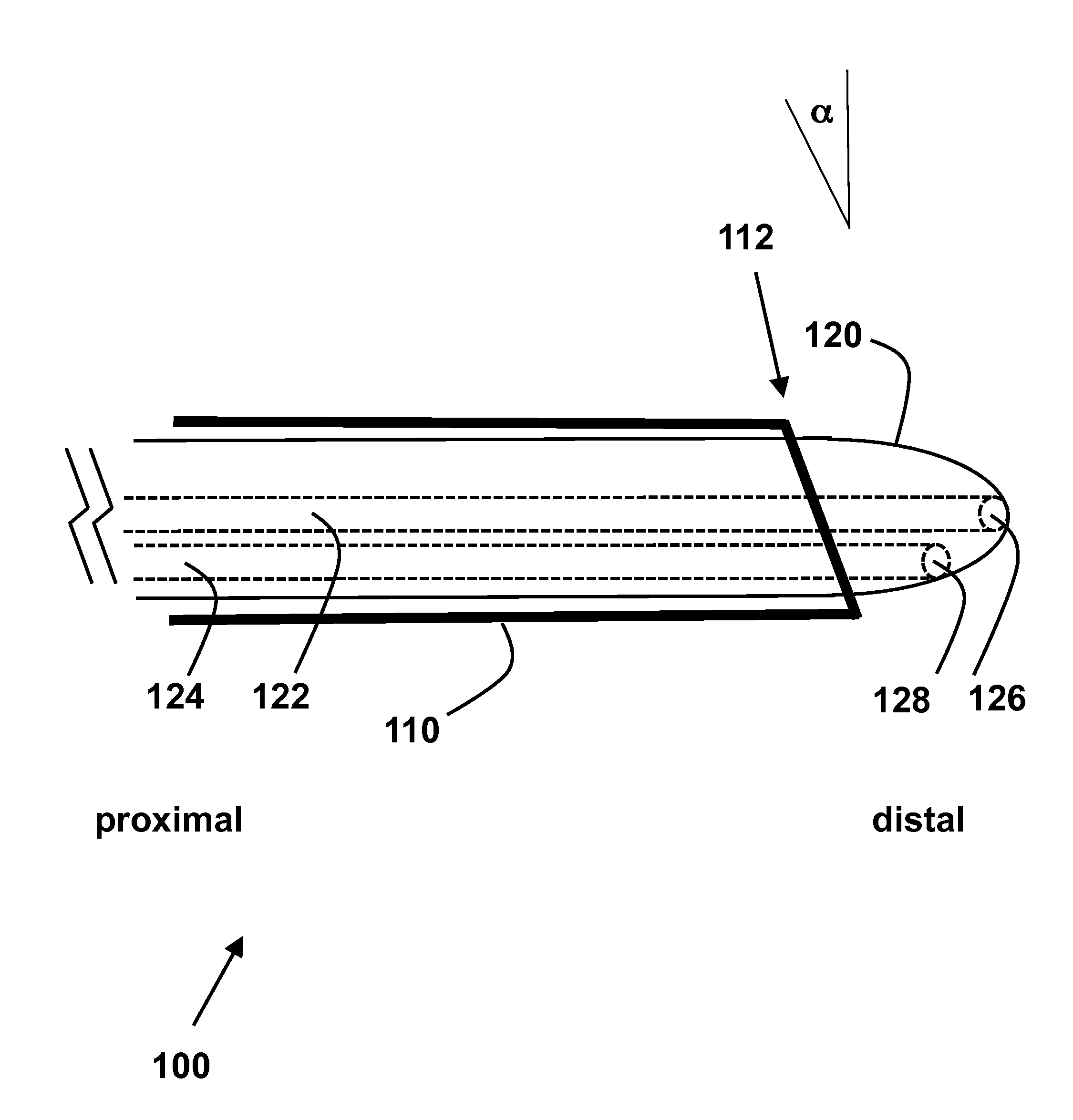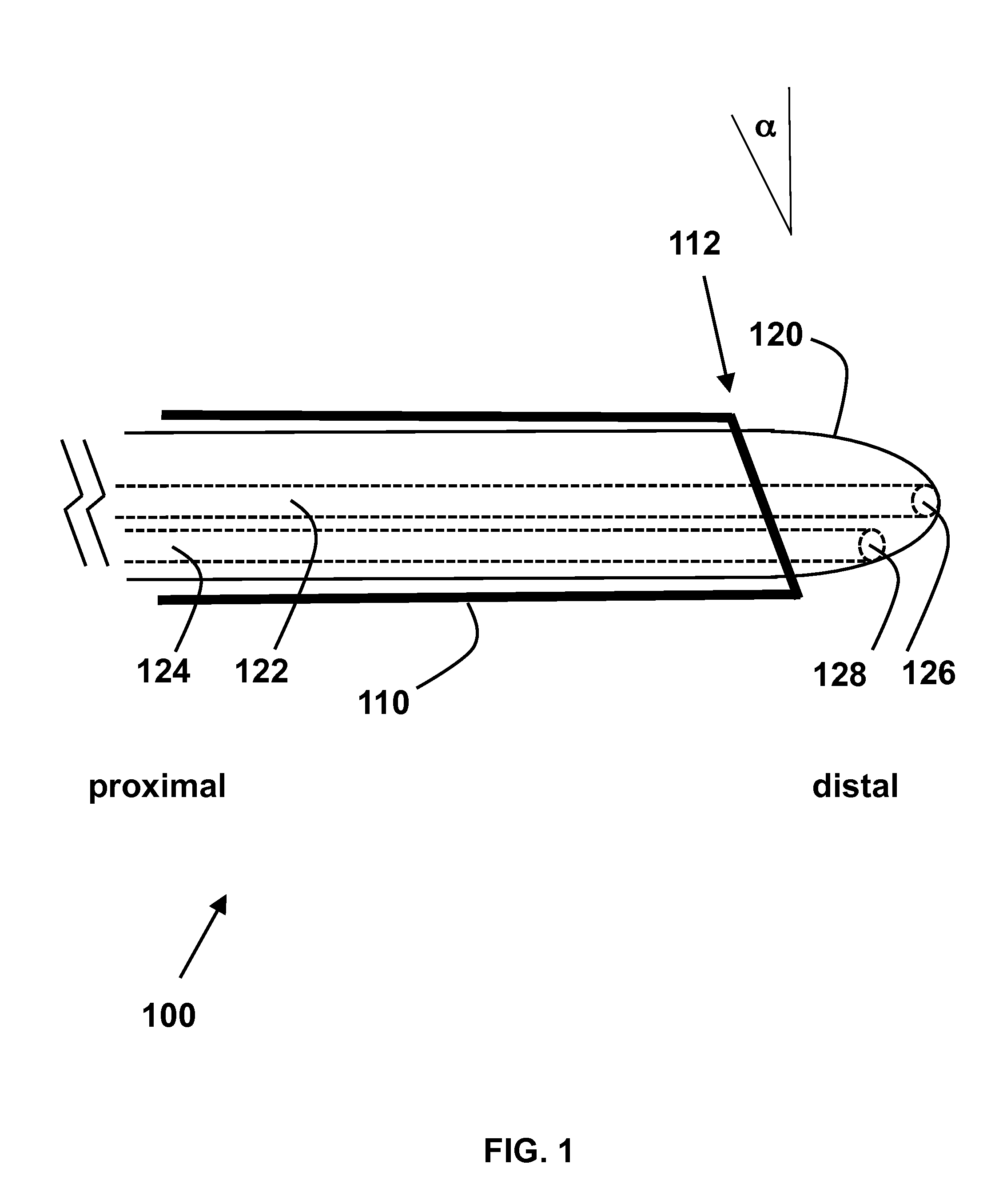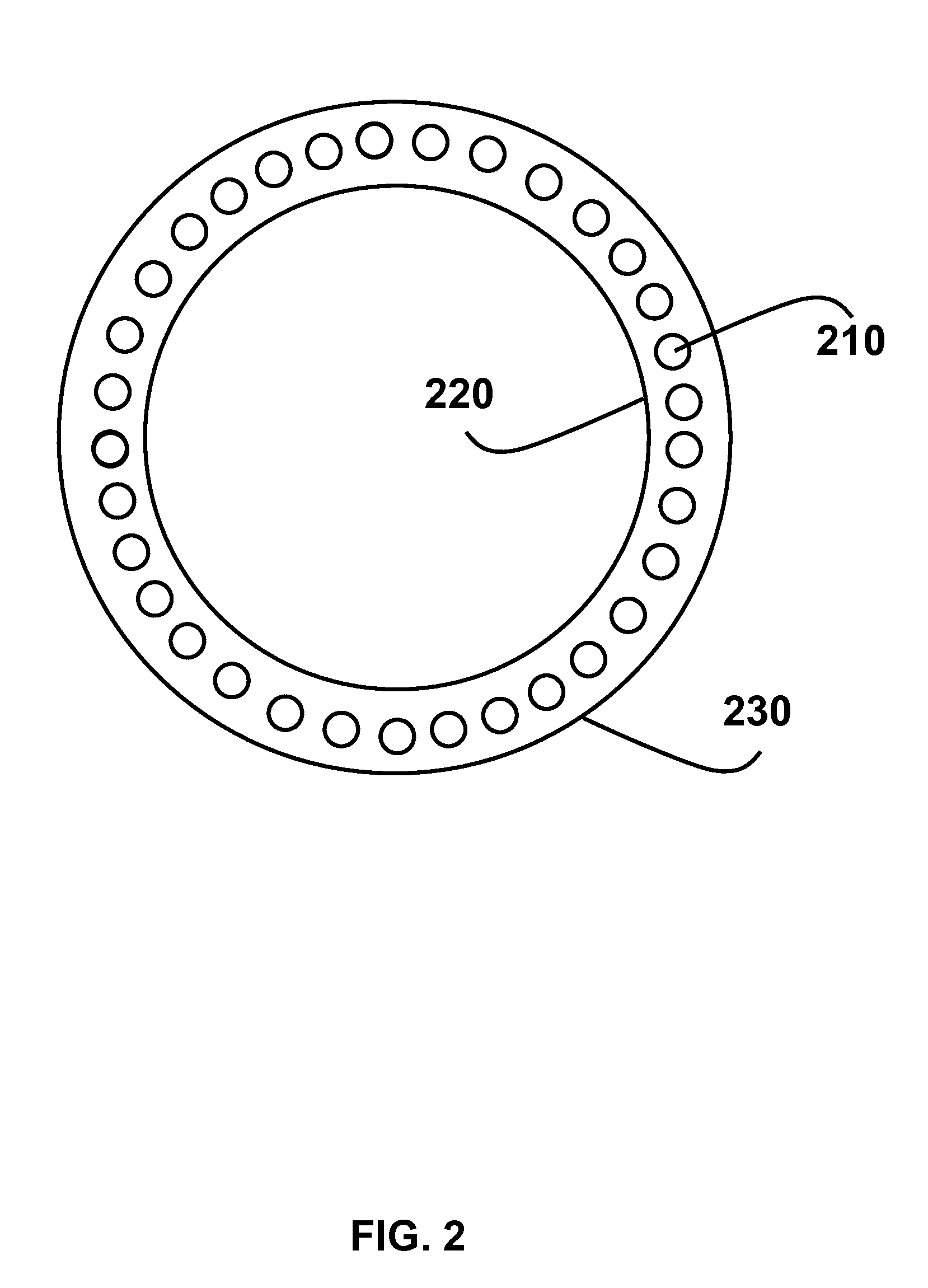Interventional radiologic devices and methods for embedded filter removal
a radiologic device and filter technology, applied in medical science, surgery, diagnostics, etc., can solve the problems of not being able to retrieve the filter, the filter may be permanently embedded in the ivc, and cannot be removed using basic, so as to reduce the risks of complex filter removal, safe and effective removal of embedded ivc filters, and minimal blood loss
- Summary
- Abstract
- Description
- Claims
- Application Information
AI Technical Summary
Benefits of technology
Problems solved by technology
Method used
Image
Examples
Embodiment Construction
[0018]In one embodiment, the interventional radiologic device for removal of an embedded filter (for example, but not limited to, an embedded inferior vena cava filter) includes a laser sheath, one or more modular adapters, and a removable introducer. As shown by device 100 in FIG. 1, the laser sheath 110 has an inner diameter (i.e. inner wall) surrounding a lumen between a proximal open end and a distal open end. In one example, the distal open end is beveled having an angle up to 45 degrees (bevel is indicated by 112 and measures as angle α). In one example, the laser sheath is made of reinforced polymer sheath material. In another example, the laser sheath is made of reinforced polymer sheath material which is able to withstand up to 10 pounds of pressure without getting fractured. In yet another example, puncture resistant materials could be used. Through the wall of the laser sheath (220 and 230 are respectively the inner wall and outer wall of the laser sheath), optical fibers...
PUM
 Login to View More
Login to View More Abstract
Description
Claims
Application Information
 Login to View More
Login to View More - R&D
- Intellectual Property
- Life Sciences
- Materials
- Tech Scout
- Unparalleled Data Quality
- Higher Quality Content
- 60% Fewer Hallucinations
Browse by: Latest US Patents, China's latest patents, Technical Efficacy Thesaurus, Application Domain, Technology Topic, Popular Technical Reports.
© 2025 PatSnap. All rights reserved.Legal|Privacy policy|Modern Slavery Act Transparency Statement|Sitemap|About US| Contact US: help@patsnap.com



